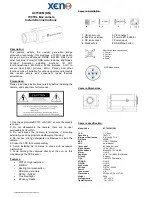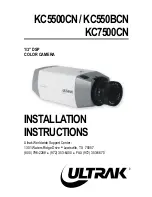
V1.02
Thom Hogan’s Complete Guide to the Nikon D300
Page 297
general shooting. These settings are usable in extreme
lighting, but realize that edge definition and resolution is
seriously compromised. Absolutely use a
High ISO NR
value of
Normal
or
High
and
no
sharpening in the Picture
Control you use in order to minimize noise production,
and avoid high JPEG compression settings.
•
Shutter speed before ISO (but remember to use
Long
exp. NR
).
In dim situations you’re often faced with a
choice of using a higher ISO value or a longer shutter
speed. Both choices will increase image noise, but which
one does so the least? Well, if you can, put the camera on
a tripod, turn on long exposure noise reduction (
Long
exp. NR
is on the SHOOTING menu) and use longer
exposures. It’s no contest. You can produce nearly noise-
free images with exposures of 10, 20, or even 30 seconds
on a D300.
•
The automatic
ISO option is quite useful in some situations
as long as you keep its range of operation limited.
See my
specific recommendations in “Auto ISO” on page <290>.
Tip:
For noisy NEF images taken at high ISO values, try using
Nikon Capture NX to convert the image to 16-bit TIFF.
Open the resulting file in Photoshop to make your color and
image adjustments. Convert the image to Lab Color. Then
use the
Median
filter (on the
Filter/Noise
menu) to remove
noise on the A and B (color) channels. Don’t sharpen the
image until you’re satisfied with the results.
















































